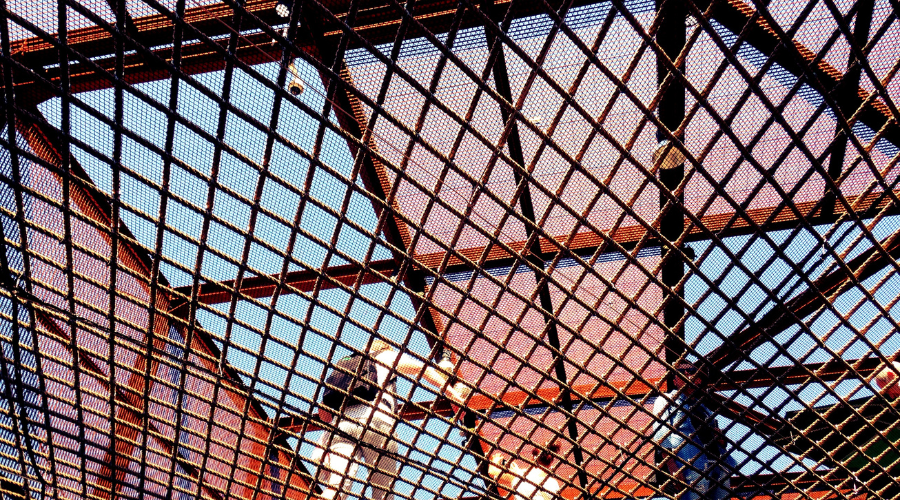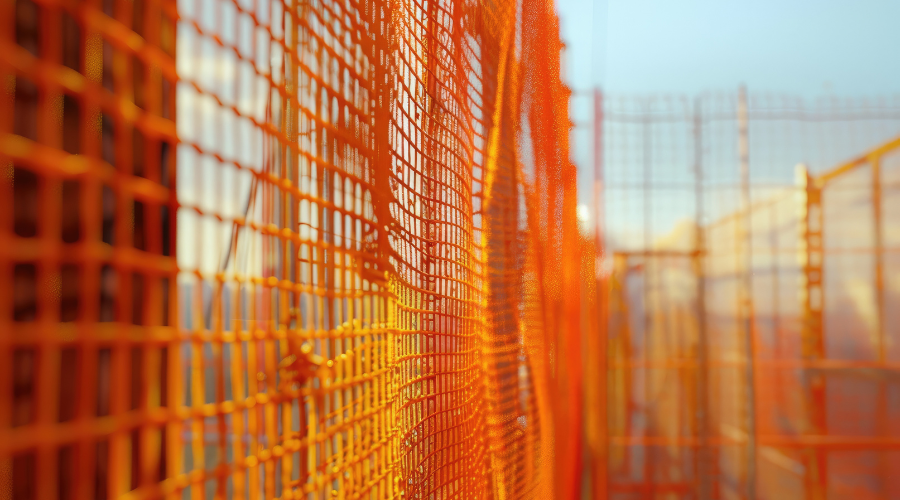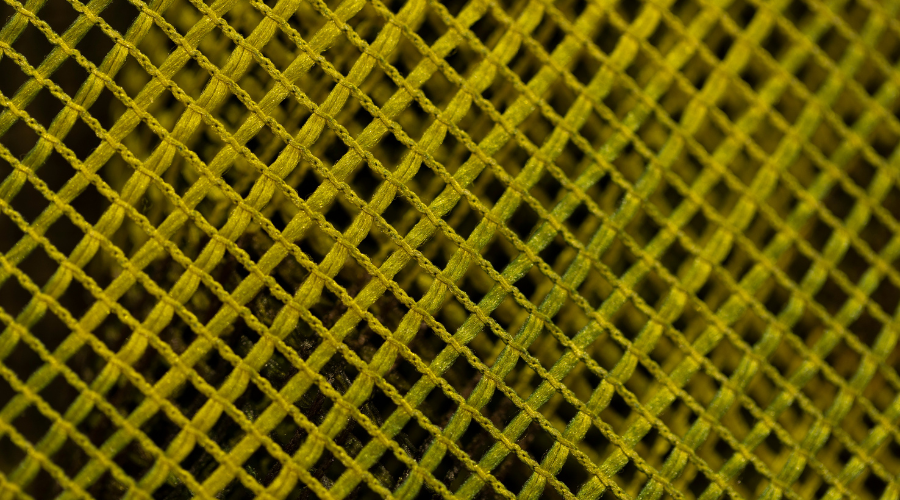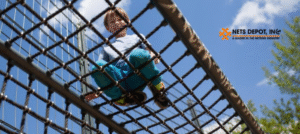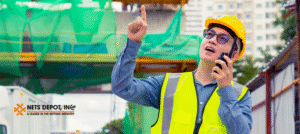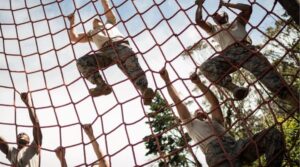In the construction industry, safety is non-negotiable. Whether you’re building skyscrapers or renovating a multi-story complex, protecting workers, pedestrians, and property is paramount. One vital component of jobsite safety is Construction Safety Netting. This blog from Nets Depot Inc will walk you through essential standards, proper uses, and installation guidelines that every contractor and project manager should know.
What Is Construction Safety Netting?
Construction Safety Netting refers to specially designed mesh structures installed around construction sites to catch falling debris, tools, or even workers. These nets help reduce the risk of injury and ensure compliance with occupational safety laws.
There are several types of safety netting commonly used:
- Debris netting
- Personnel safety nets
- Perimeter nets
- Scaffold nets
Each type is designed for specific site conditions and safety requirements. These netting solutions play a critical role in construction zones by serving as both a physical and psychological barrier, fostering a safer working atmosphere for laborers operating at heights.
Read also:- 12 Essential Construction Safety Netting Tips to Protect Lives
Why Safety Netting Matters
Neglecting proper safety netting can result in injuries, lawsuits, and shutdowns. The Occupational Safety and Health Administration (OSHA) mandates that fall protection systems, such as safety nets, must be in place for work performed at heights of six feet or more.
Installing Construction Safety Netting helps:
- Prevent worker injuries from falls
- Shield pedestrians from falling debris
- Protect adjacent property from damage
- Minimize delays and costs from workplace accidents
Beyond compliance, it’s a demonstration of your company’s commitment to safety, ethics, and long-term project integrity.
Types of Construction Safety Netting Materials
The effectiveness of safety netting depends largely on the materials used. Nets Depot Inc offers a wide range of high-quality options designed to meet various site needs:
➤ Polyethylene Netting
Polyethylene netting is a lightweight and affordable option. It’s UV-treated for outdoor durability and is ideal for controlling debris on scaffolding or high-rise structures. It’s also resistant to chemical exposure, making it well-suited for industrial environments.
➤ Nylon Netting
Nylon netting is known for its high tensile strength and elasticity, making it an excellent choice for personnel safety. This netting type resists abrasions and chemicals, which is crucial for long-term construction projects with shifting demands and exposure to rough materials.
➤ Fire-Retardant Netting
This type is treated to meet stringent fire codes. Required for indoor applications and heat-prone environments, fire-retardant netting offers peace of mind when electrical tools or welding operations are involved.
Installation Guidelines
Proper installation is key to ensuring the netting serves its purpose. Consider the following general installation tips:
- Install nets as close to the working surface as possible
- Anchor securely using clamps, hooks, or rope ties
- Conduct regular inspections for wear or damage
- Replace any compromised netting immediately
Following the manufacturer’s instructions precisely and using professional installers when necessary can ensure structural integrity and legal compliance.
Placement and Positioning Considerations
Safety nets should be positioned to cover all potential fall zones. Here are placement tips:
- Horizontal nets should extend a minimum of 8 feet out from the structure
- Nets must not sag more than 6 inches under the anticipated load
- Install below all walking/working surfaces where falls are possible
For complicated builds, engineers and safety officers should work in tandem to devise netting solutions that fully cover vulnerable zones.
Load Testing and Certification
Before deployment, Construction Safety Netting must be tested for strength and resilience:
- Conduct a drop test using a 400-pound bag of sand from a specified height
- Document all testing procedures
- Maintain certification records for each net
Certification should be renewed for long-term installations. Nets that remain in service for over a year should undergo retesting to validate their structural performance.
Weather and Environmental Factors
Construction sites are subject to varying weather conditions. Netting must withstand:
- Heavy rain and moisture exposure
- High winds
- Snow and ice accumulation
- UV radiation
Failing to account for these variables can result in reduced efficiency or premature wear. It’s important to choose Construction Safety Netting products rated specifically for your geographic location and seasonal challenges.
Maintenance and Inspection Protocols
Routine inspection and maintenance are crucial. Include these in your site safety plan:
- Daily visual inspections for tears or frays
- Weekly documented inspections
- Immediate replacement of damaged sections
- Seasonal maintenance for long-term projects
In addition to these checks, it is advisable to create a digital record-keeping system for all inspections. Photographic documentation and technician notes help ensure transparency and speed up response times when repairs are needed.
Custom Solutions for Unique Sites
Not all construction projects are created equal. Nets Depot Inc offers custom Construction Safety Netting solutions for unique layouts or specialized applications:
- Tensioned safety barriers for bridges or overpasses
- Vertical netting for scaffolding protection
- High-rise perimeter nets
- Colored netting for zoning or branding
Each project comes with its own risk matrix and environmental variables, making bespoke safety netting configurations an essential part of our services, not just beneficial.
Legal and Insurance Implications
Improper or missing safety netting can have serious legal consequences:
- OSHA citations and fines
- Increased workers’ compensation premiums
- Legal liability in case of accidents
In the event of a workplace accident, documentation proving proper installation and maintenance of safety netting can provide significant protection against litigation or insurance denials.
Choosing the Right Safety Netting Partner
Partnering with a reputable supplier like Nets Depot Inc ensures you receive high-performance products backed by industry knowledge and expert support. Our team assists with:
- Product selection and material comparisons
- Installation support and training
- Compliance guidance
- On-site safety consultations
With years of industry expertise and a commitment to cutting-edge materials, Nets Depot Inc helps ensure that your Construction Safety Netting system is reliable, durable, and tailored for your project’s scope and scale.
Advanced Technologies in Safety Netting
Innovations in material sciences and digital monitoring are influencing how safety netting is deploye. Smart netting systems can include RFID tags for asset tracking, and some are integrate with sensors that alert supervisors to damage or excessive load.
This forward-thinking approach not only enhances jobsite safety but also aids in compliance by offering real-time monitoring. As the industry evolves, these technologies may become standard, especially for large-scale or government-regulated projects.
Final Thoughts
Safety netting isn’t just an accessory—it’s a fundamental part of a responsible construction strategy. Ensuring that you meet installation, maintenance, and performance standards will save lives, reduce liability, and keep your projects on track. With Nets Depot Inc, you’re not just buying netting; you’re investing in safety, reliability, and peace of mind.
A forward-looking safety plan that includes comprehensive Construction Safety Netting coverage helps future-proof your operations. From environmental durability to legal defense, safety netting proves its worth across multiple dimensions.
Contact Us
Looking to enhance your site’s safety with dependable, certified Construction Safety Netting? Get in touch with Nets Depot Inc to discuss your needs, receive expert guidance, and request a customized solution that aligns with your project goals.
Our specialists are available to assist with everything from product selection to installation logistics. Whether you’re working on a residential mid-rise or a major commercial development, our solutions are engineer for performance and compliance.
Reach out today through our website or email to schedule a consultation. Let us help you take the next step in securing your construction site effectively and efficiently.


